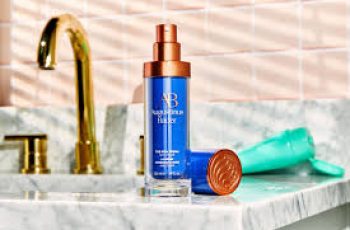16 Baumann Skin Types
What are the 16 Baumann Skin Types?
The Baumann Skin Type Classification System is the skin type classification system used by dermatologists in their medical offices to divide patients into 16 Skin Types. These 16 distinct skin types are used to prescribe the best skin care regimen for their skin.
The Baumann skin typing system was first revealed publicly in my New York Times bestselling book The Skin Type Solution (Bantam 2006) and has been included in many medical textbooks including Fitzpatrick Dermatology in General Medicine and Cosmetic Dermatology. (1-9)
It is used throughout the world.
You can take the Baumann Skin Type skin care quiz online, or find a participating doctor near you.
Once you know your Baumann Skin Type you can:
Get a customized skin care routine with step by step instructions
Get skin care product recommendations for each step in your skin care routine from many medical grade skin care brands
Read product reviews from others with the same Baumann Skin Type as you
Earn points that can be used towards skin care product purchases
Receive educational emails about your skin type (You can opt out)
Browse the skin care library to learn more about your skin’s needs
Visit our You Tube channel to see interviews from others with your same skin type and hear from skin care product scientists and dermatologists
Skin Type Solutions custom regimens at one of our doctor’s clinics
What Are the 16 Baumann Skin Types?
Each skin type is determined by the presence or absence of 4 barriers to skin health. Your skin care routine will be designed to target the underlying barriers to skin health that are affecting your skin’s health and appearance. Your skin care routine will target all of the following skin issues you may have:
Dehydration
Excess sebum
Inflammation
Hyperpigmentation
Skin aging
Our goal is to help you improve your skin type by using the best skin care products layered in the proper order in your custom skin care routine.
What do the 4 letters in the Baumann Skin Typing System mean?
D= Dehydration or Dry Skin or O = Oily skin or Normal skin
S= Sensitive Skin or R= Resistant Skin
P= Uneven skin pigment (dark spots on face) or N= No dark spots
W= Wrinkle-prone or T= Tight unwrinkled skin & healthy habits
Your 4-letter skin type designation code, called the Baumann Skin Type Indicator, takes one letter from each section above together to represent your Baumann Skin Type on the skin type chart.
For example, DSNW is dry, sensitive, no uneven pigment, and wrinkle-prone.
Are there any bad skin types?
While some skin types might be easier to take care of than others, all skin types can get to perfect skin health by following the right custom regimen.
Each skin type is prone to a different combination skin health concerns, so knowing your skin type is the first step towards skin health.
For example, Skin type 3 can experience all four barriers to skin health, while type 10 typically experiences none.
Each skin type has its own dedicated blog post, listed below. Check out yours for specific information and strategies on your skin.
Click on a Baumann Skin Type below to learn more:
DSPT Baumann Skin Type 1
DSNT Baumann Skin Type 2
DSPW Baumann Skin Type 3
DSNW Baumann Skin Type 4
OSPT Baumann Skin Type 5
OSNT Baumann Skin Type 6
OSPW Baumann Skin Type 7
OSNW Baumann Skin Type 8
ORPT Baumann Skin Type 9
ORNT Baumann Skin Type 10
ORPW Baumann Skin Type 11
ORNW Baumann Skin Type 12
DRPT Baumann Skin Type 13
DRNT Baumann Skin Type 14
DRPW Baumann Skin Type 15
DRNW Baumann Skin Type 16
How to Find Your Custom Skin Care Routine for Your Baumann Skin Type
Once you know your Baumann Skin Type, you will be given a custom skincare routine with exact product recommendations in a step by step morning and evening skin care routine.
We will recommend our favorite product for each step of the routine, but each step has substitutes in case you have preferences or specific price ranges.
How to find vegan products for my skin type
If you are a vegan, it can be a minefield to find cruelty free, animal free skin care products. Luckily, there are a few kinds of notation that make spotting vegan products a little easier.
Look for products labeled “clean,” or “cruelty-free.” Our customizable routines will allow you to choose based on your beliefs and still ensure that the skincare products are right for you!
Once you know your Baumann Skin Type, you’ll have all the information you need for perfect skin health at your fingertips. Dive into the rabbit hole of our ingredient library; get real information backed by studies on where ingredients come from and what they do to skin.
You will receive a suggested skincare routine that is customized for your skin type and lifestyle habits.
Join our Community!
Stay current on Skin Care, Skin Types and Skin Science by watching our Skin Type Talks Series on You Tube. Come on the show and tell us about your skin type’s issues.
We hope you will join our community and share reviews, experiences and advice with others that have taken the same steps to skin health you have through the Baumann Skin Type system.
We are passionate about your skin care.
DQH Can I use salicylic acid first and then vitamin C?
It’s easy to create a skincare routine, but knowing how to use it is another thing entirely. In most cases, if you’re not getting the desired skin results, it could be due to the layering of conflicting ingredients. So, is it possible that salicylic acid and vitamin C are such ingredients? Or are these active ingredients the duo that’s been missing from your skincare routine? If you want answers, stick around because today we are going to explain the benefits of salicylic acid and vitamin C and how they can be used in your daily life.
What are the benefits of salicylic acid for skin?
Salicylic acid is one of the most commonly used beta hydroxy acids and is favored by many people with oily, acne-prone skin. This acid is derived from willow bark, and unlike its water-soluble relatives (called alpha-hydroxy acids), salicylic acid is oil-soluble, which means it can penetrate deeper into the lower layers of the skin. Once it reaches the lower layers, it can help unclog pores of excess sebum, dirt, bacteria, debris, and impurities. This results in clearer skin tones and greater definition.
Not only does salicylic acid benefit the underlying layers, but the outer surface of the skin benefits as well. When applied to the skin, salicylic acid removes the buildup of dead skin cells. This is accomplished by breaking the bonds that hold dead cells to the surface. Over time, this can cause the complexion to look dull and prone to acne, blackheads, and other blemishes.
If you’d like to learn more about salicylic acid and how it can improve your skin, check out this dedicated blog post from a beauty insider.
What are the benefits of vitamin C for skin?
Vitamin C is considered one of the most powerful antioxidants, which means it is very effective at fighting free radicals and preventing them from causing further skin damage. Examples of free radicals include pollution, central heating, UV rays and harsh climate. They attack proteins, fats and cell membranes as soon as they come into contact with the skin, causing signs of premature aging such as fine lines and wrinkles as well as hyperpigmentation, flaky patches of skin and loss of elasticity.
Many people usually prefer to use vitamin C in their morning routine as this ingredient gives the complexion a radiant glow. You’ll also find that vitamin C can target areas of hyperpigmentation, plumping the skin and reducing the appearance of fine lines and wrinkles.
The thing about vitamin C is that there are a lot of outdated studies going back to the 1950s that describe vitamin C as an unstable skin component. Thanks to improvements in modern technology, this is no longer the case as all products now contain a stable form of vitamin C.
Visit The Beauty Insider to learn more about vitamin C. So please check out our blog post.
Can I use salicylic acid first and then vitamin C?
Yes, you absolutely can. In fact, it’s thought that using salicylic acid before using vitamin C ensures it penetrates faster and works faster.
This is an efficient way to utilize two power sources, and the reason has to do with pH. For example, the skin’s natural pH is about 4.7, making it slightly acidic. Salicylic acid and vitamin C are also both acidic, and you’ll find that vitamin C is absorbed quickly into the skin. Therefore, using salicylic acid beforehand can increase the acidity of the skin and allow vitamin C to penetrate into the skin faster.
While this is considered an effective way to combine two powerful ingredients, you need to be aware of your skin type and how it reacts to certain active ingredients. Even people with perfect, normal skin can experience skin sensitivity and irritation. Therefore, always consult a doctor or dermatologist before using any new products on your skin.
It’s also important to follow skin application rules. In this case, you need to use the product correctly to ensure you get the best results for your skin. If you’re not sure what I mean, the basic rule for skin is to start with the thinnest consistency and work your way up to the thickest consistency. This prevents a barrier from forming on the surface, preventing other active ingredients from penetrating the skin.
Can I use salicylic acid at night and vitamin C in the morning?
Yes, absolutely, this is considered the most effective way to get returns without any adverse side effects. This is because there is enough time between applications to ensure that the skin’s pH levels return to balance.
You’ll also find that Vitamin C is rich in antioxidants and is perfect for use in the morning to ensure your skin is protected and looking its healthiest. Due to the small size of salicylic acid molecules, it is an acid that is able to reach the deepest parts of the skin. While this is effective at keeping skin clear, it also increases the risk of irritation and photosensitivity. Therefore, many people prefer to use powerful BHAs in their evening routine without exposure to UV rays, pollution, or harsh weather.
Warning: If you avoid using sunscreen every day, none of these ingredients will do what your skin needs. The combination of chemical peels and powerful ingredients increases the risk of further damage to the skin’s surface. Use SPF 50 every day to keep your skin protected and your lipid barrier healthy, even on cloudy days, keeping your skin in top condition.



